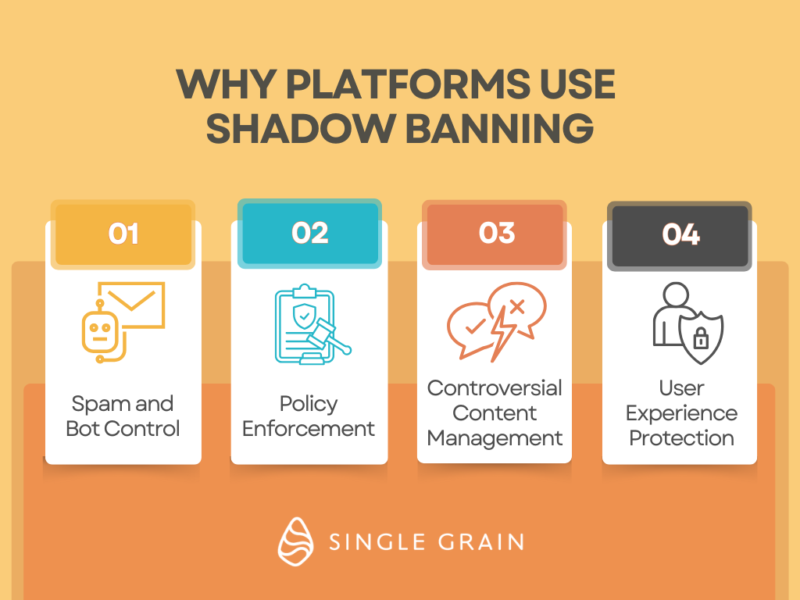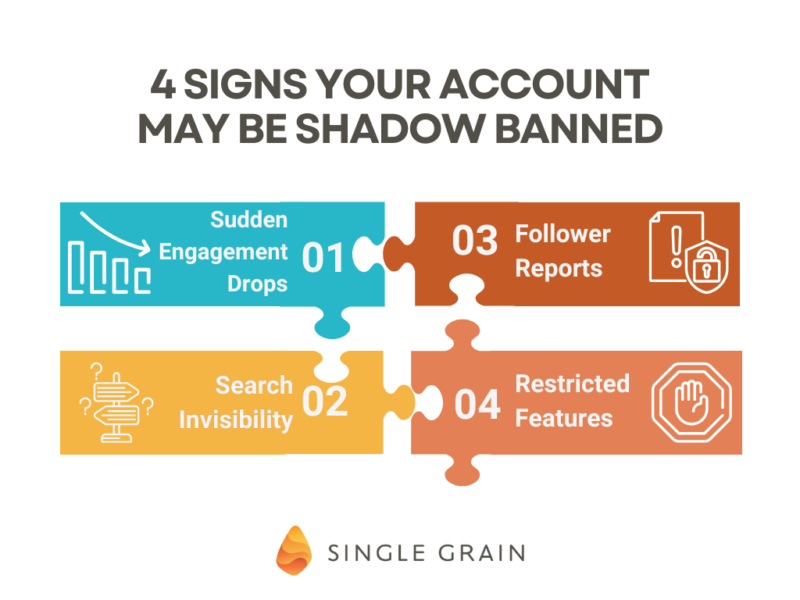What is Shadow Banning and How Can You Avoid It?
Description
Have you noticed a sudden drop in your social media engagement? Are your posts seemingly invisible to everyone except your most loyal followers? You might be experiencing shadow banning—a mysterious form of content suppression that platforms rarely acknowledge but content creators frequently encounter. Unlike outright account suspension or content removal, shadow banning operates in the shadows, making it particularly frustrating to detect and address.
In today’s digital marketing landscape, social visibility is everything. Whether you’re building a personal brand, promoting a business, or sharing important information, understanding shadow banning is crucial to maintaining your online presence. This comprehensive guide will explain what shadow banning is, how to tell if you’ve been affected, and most importantly, how to prevent it from happening to your accounts.
Key Highlights
- Hidden Censorship: Shadow banning restricts content visibility without notifying creators, affecting engagement by up to 93-99% on some platforms
- Platform Patterns: While major platforms deny “shadow banning,” all use algorithms that can effectively shadow ban content deemed problematic
- Detection Signs: Sudden engagement drops, disappearance from search results, and content invisibility to others are key indicators of shadow banning
- Prevention Strategies: Following platform guidelines, using strategic hashtags, and maintaining authentic engagement can help avoid algorithmic penalties
- Recovery Tactics: Specific approaches to restore visibility if your account has been shadow banned, including temporary platform breaks
TABLE OF CONTENTS:
- What Exactly is Shadow Banning?
- Why Platforms Use Shadow Banning
- Signs Your Account May Be Shadow Banned
- Platform-by-Platform Shadow Banning Guide
- 10 Effective Strategies to Avoid Shadow Banning
- How to Recover from Shadow Banning
- The Ethics and Future of Shadow Banning
- Tools and Resources to Monitor Your Account Health
- Navigate Ad Challenges and Shadow Banning Concerns with Karrot.ai
What Exactly is Shadow Banning?
Shadow banning—also known as stealth banning, ghost banning, or comment ghosting—is the practice of restricting a user’s content on social media platforms without their knowledge. Unlike traditional content moderation where posts are removed with notification, shadow banned content remains visible to the creator but is significantly limited in its reach to other users.
The term gained popularity around 2017-2018, particularly when politically conservative account owners alleged they were being systematically silenced on platforms like Twitter. While social media companies typically deny using “shadow banning” as an official practice, they do acknowledge that their algorithms impact what content is prioritized and shown to users.
As Yale researcher Tauhid Zaman explains, “More clandestine than a straightforward ban from a platform, shadow banning limits the broader visibility of a user’s content without their knowledge. A Facebook or Instagram post that’s been subjected to shadow banning would remain on the original poster’s profile page, but it would appear less, or not at all, in the timelines of other users.”
The impact can be dramatic. Internet policy analyst Monica Horten found that Facebook’s “feature block” function created a “sudden plunge” of 93–99% in the reach of certain UK-based Pages—”not much different from completely unpublishing the page.”
Why Platforms Use Shadow Banning

Social media platforms face enormous content moderation challenges. With billions of posts created daily, they rely on a combination of human reviewers and algorithmic systems to filter content. Shadow banning emerged as a tool to address several platform concerns:
- Spam and Bot Control: Limiting automated or spammy content without alerting the creators, who might otherwise simply create new accounts
- Policy Enforcement: Reducing the visibility of content that skirts platform guidelines without triggering the backlash that comes with outright removal
- Controversial Content Management: Limiting the spread of polarizing or potentially harmful content while avoiding accusations of censorship
- User Experience Protection: Preventing low-quality content from dominating feeds and search results
Ryan Sorrell, founder and publisher of the Kansas City Defender, notes that social media posts can be subject to shadow bans not only because of the issues they cover—including controversial topics—but also because their reporting uses “unminced language, without euphemisms.”
Signs Your Account May Be Shadow Banned

Detecting shadow banning can be challenging precisely because it’s designed to be difficult to identify. However, several indicators can help you determine if your content is being suppressed:
Sudden Engagement Drops
The most common sign is a dramatic and unexplained decrease in engagement metrics. If your posts typically receive a certain number of likes, comments, and shares, and those numbers suddenly plummet despite maintaining similar content quality and posting frequency, shadow banning may be the culprit.
Search Invisibility
Try searching for your account or content from another account (preferably one that doesn’t follow you). If your profile doesn’t appear in search results or requires typing your exact username, this could indicate shadow banning. Similarly, if your posts don’t appear under hashtags you’ve used, even when searching from another account, your content may be restricted.
Follower Reports
Sometimes, your most engaged followers will notice your absence from their feeds and mention it to you. If multiple followers report not seeing your content despite following you, this is a strong indicator of reduced visibility.
Restricted Features
In some cases, shadow banning may limit your ability to use certain platform features, such as liking or commenting on other users’ content. These restrictions may be subtle but can indicate that your account has been flagged.
Platform-by-Platform Shadow Banning Guide
Each social media platform has its unique approach to content moderation and algorithmic distribution. Here’s how shadow banning typically manifests across major platforms:
TikTok
TikTok’s content moderation policies don’t explicitly mention shadow banning individual users. However, they acknowledge that certain content may be deemed ineligible for the For You Page—th





